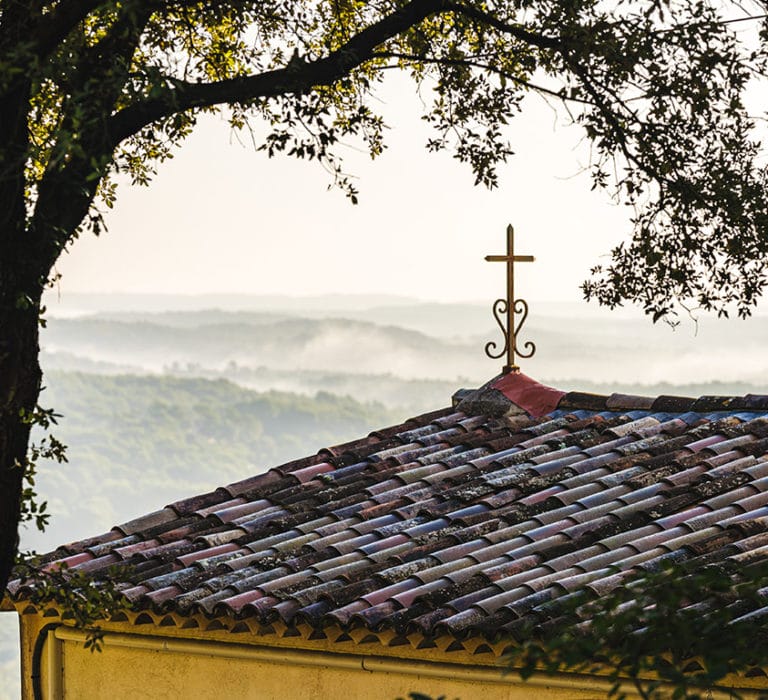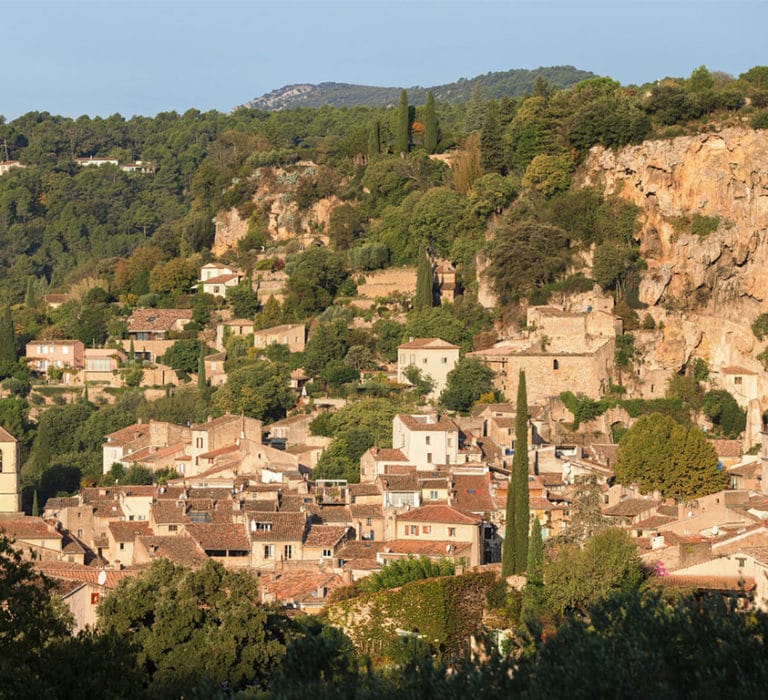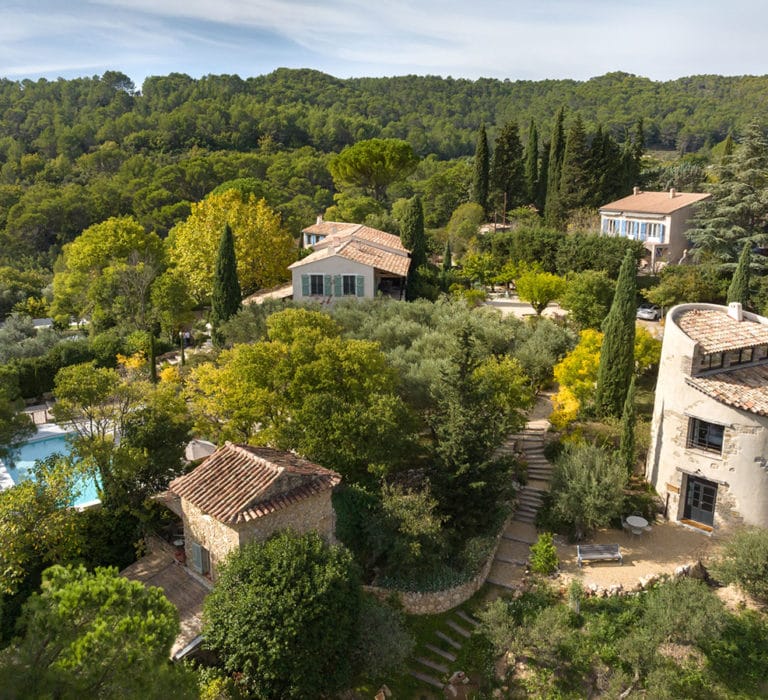Cotignac: labelled “Most beautiful village in France” in the heart of the Var
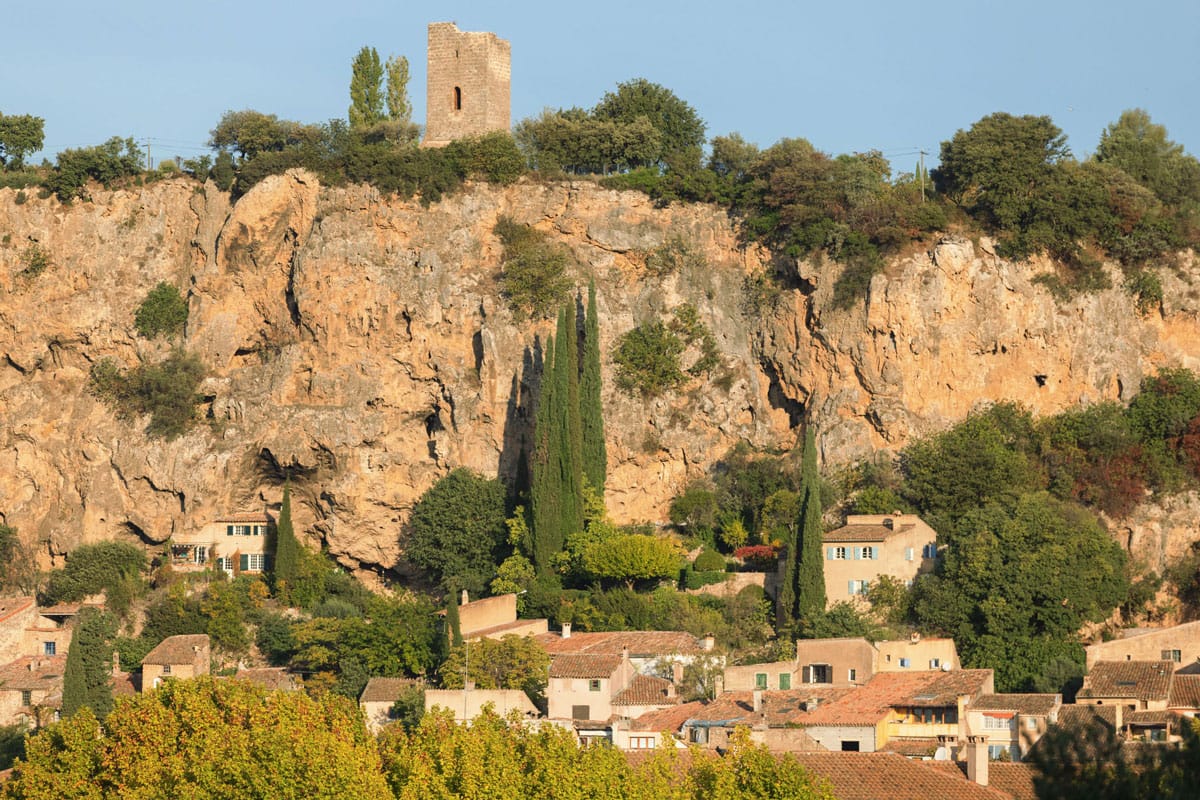
Cotignac, a prominent jewel of the Var and recently labelled with “Most beautiful village in France” in 2022, is a must-see destination for nature lovers and history buffs.
Sheltered by an impressive tuff limestone cliff run through with troglodyte fortifications, this medieval village is distinguished by its remarkable natural and cultural heritage.
Cotignac: from prehistory to the Middle Ages
The history of Cotignac dates back to the Stone Age. With its cliff 400m long and 80m high, the tuff limestone was once shaped over the centuries by the running waters of the Cassole, a mineralised river whose form changed shaped several times and left behind thick stalactites and deep cavities in the rock. Touring the cliff’s fortifications is an essential part of any trip to Cotignac and its magical geological beauty.
From the Stone Age, nomadic tribes of hunter-gatherers settled on the heights of the cliff, using its vantage point to dominate the valley below. During Antiquity, the region was part of the Roman province of Narbonne Gaul. Many local roads, buildings and monuments still show the Roman presence of that time, including the Aqueduct of the “five bridges” with its 9 arches, located beside the hamlet of Valcros via Brignoles.
Between the 5th and 6th centuries the village of Cotignac was first established on the land above the cliff, like a settlement around the Saint Martin river spring. The inhabitants prospered well thanks to their agriculture and animal husbandry. A chapel that was built on this spot still exists today, with its first foundations set in 1174. Wall paintings have been recently discovered in the chapel, dating from the 13th or 14th century, and give this exceptional building even more character thanks to their artistic quality and their rarity in Provençal architecture and decoration.
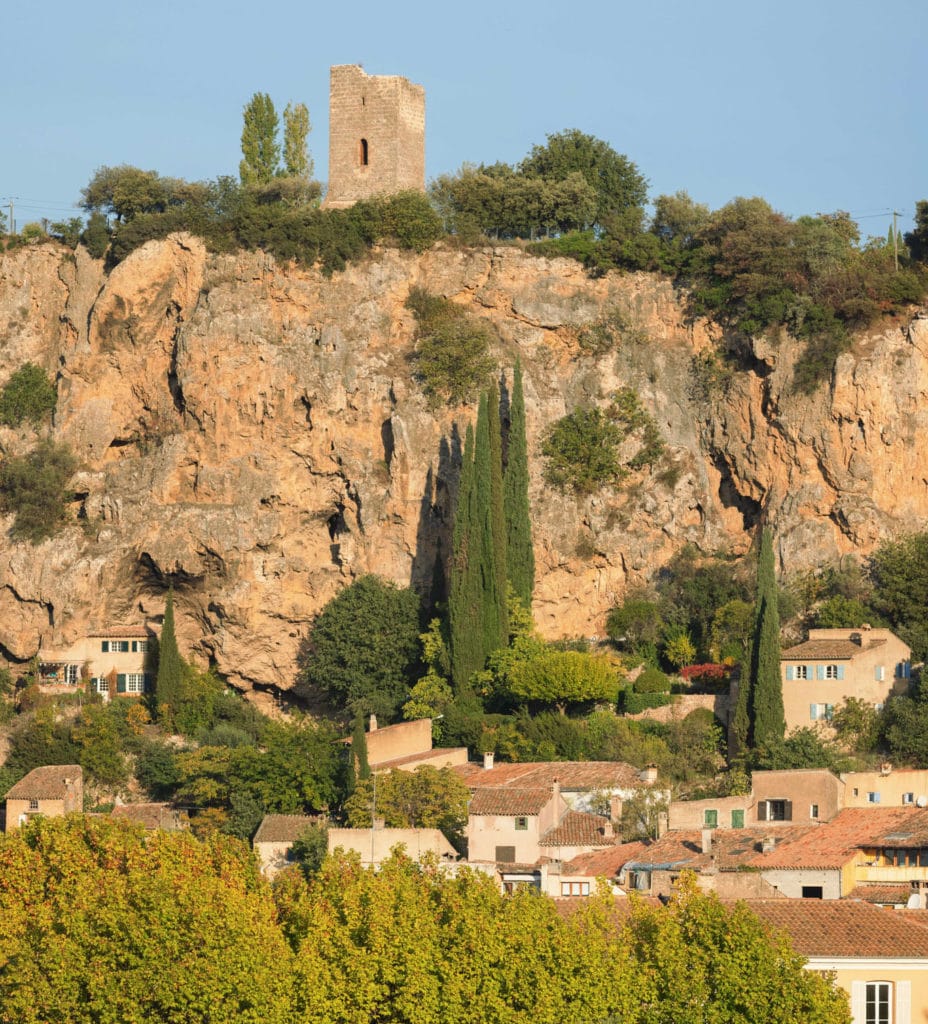
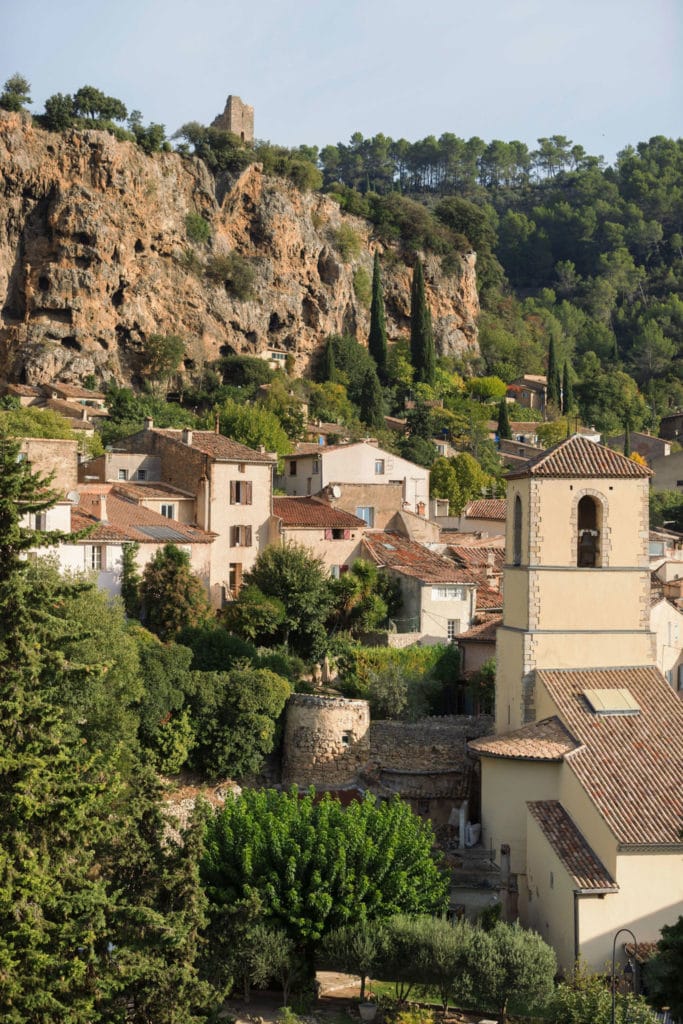
It was not until the Middle Ages that the Cotignac population decided to settle at the foot of the cliff for fear of outlaws and other various interferences. The hamlet grew and the Saint Pierre church was built in 1266, remarkable for its atypical facade and its grand organ, in order to meet the needs of the growing population. Then, during the religious wars of the 16th century, Cotignac became a stronghold for Catholics, who built the cliff fortifications and the two majestic Saracen towers overlooking the village to protect against any invasion from the Huguenots. From the height of the towers, the view to the south stretches as far as Entrecasteaux and Carcès. The largest tower has the special particularity of having a secret passage that links to a troglodyte cave dug into the cliff below.
Apparitions of the Holy Family in the 16th century
On August 10th, 1519, the Virgin Mary and Baby Jesus appeared to Jean de la Baume, a local craftsman who worked on Mont Verdaille, instructing him to tell the villagers to build a chapel on the very site of the apparition. Two years later, the Notre Dame de Grâces sanctuary was completed and honoured by Pope Leo X. The spot then became famous thanks to one illustrious pilgrim, King Louis XIV, who came to give thanks for his birth in 1660, accompanied by his mother, Anne of Austria.
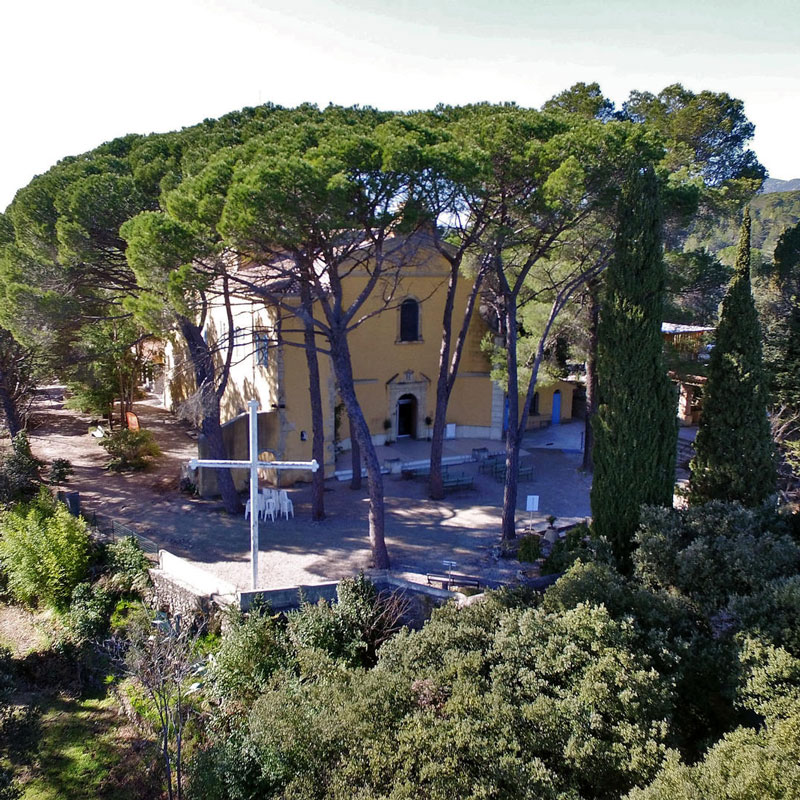
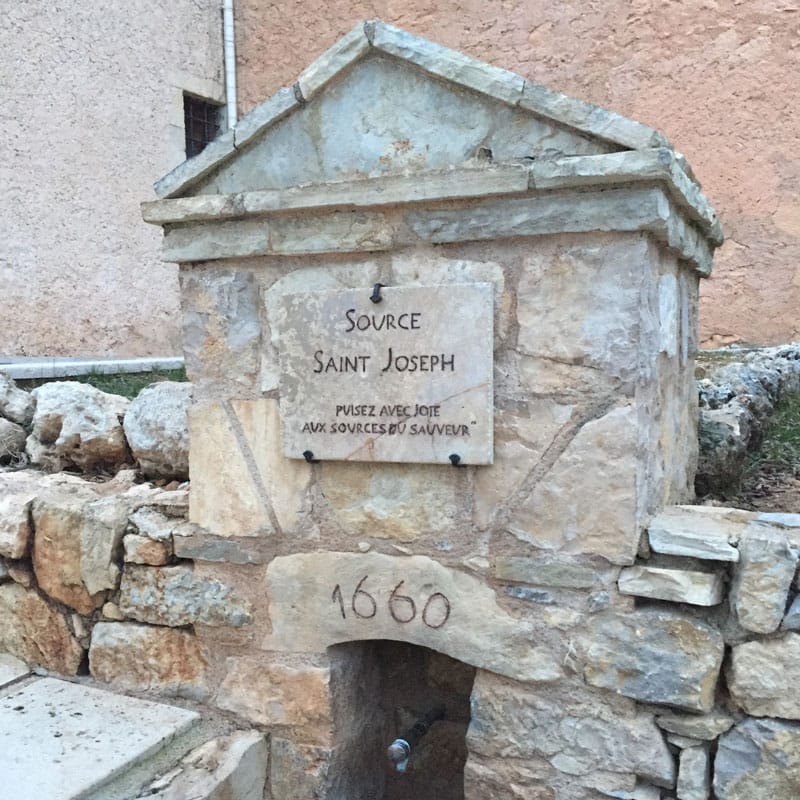
The only place in the world where the three members of the Holy Family have appeared, Cotignac has become a major site for Christian Catholic pilgrimage. Every year, 150,000 pilgrims put on their walking shoes to make their way to the sanctuary, their backpacks full of supplies and their hearts full of prayers..
The golden age of Cotignac
In the 18th century Cotignac experienced significant population growth and village became extremely prosperous. The water from La Cassole river was once again rechanneled to benefit the village spread towards the south. This abundance of water meant that the villagers could build canals for irrigation, washhouses, corn and oil mills, which could then lead on to the expansion into tanneries, hat factories, wool and linen mills. The region enjoyed its rich, fertile and sunny lands beside the slopes of Mount Bessillon, where olives, wheat, vines and even quince were grown. On the outskirts of the village, sheep were widely bred, as well as silkworms, which had their heyday in the 19th century, and whose breeding has traditionally disappeared since the Second World War, unlike sheep breeding, which is still seen widely today.
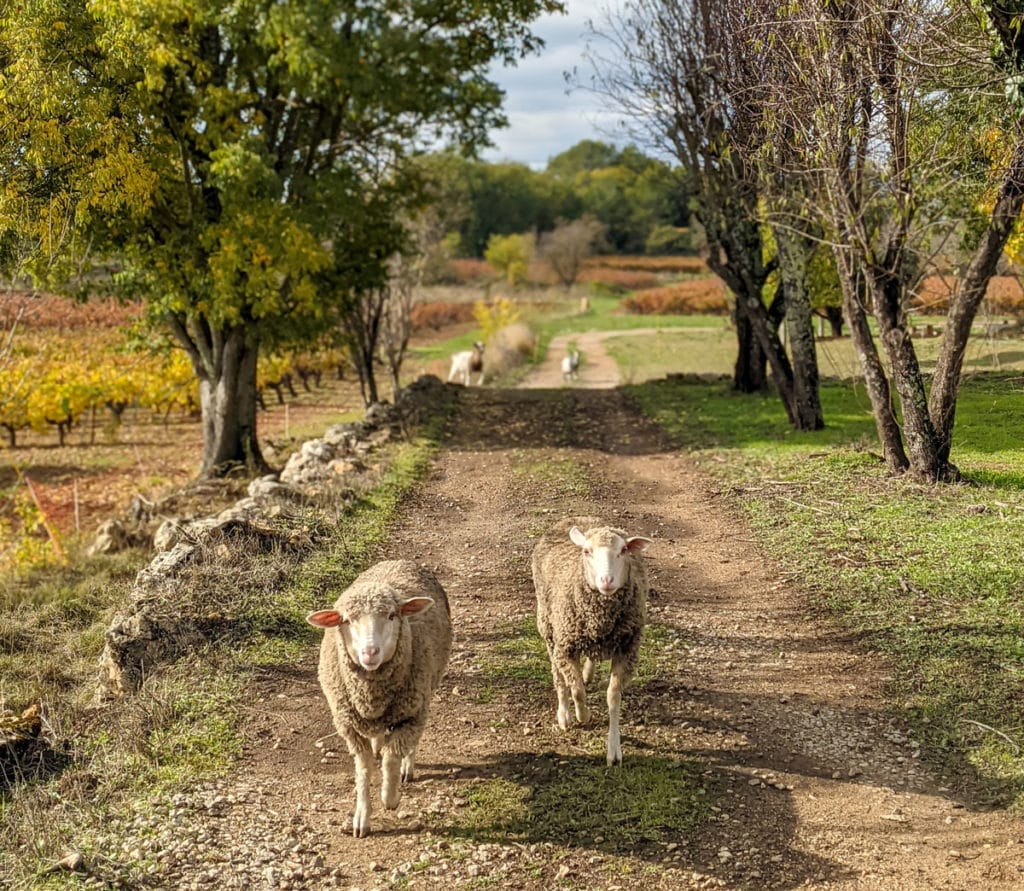
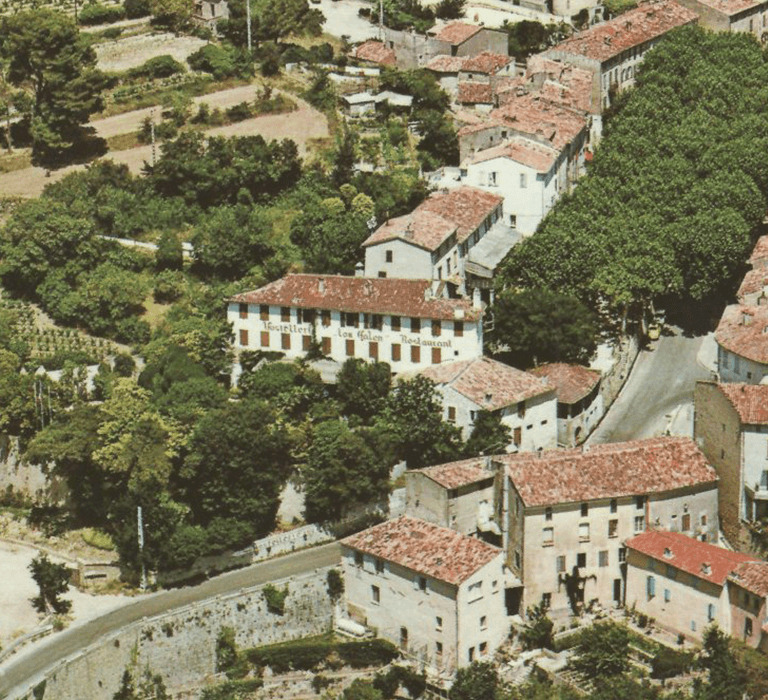
In the 20th century, the destiny of Cotignac took a completely different turn when Yvonne de Gaulle, wife of Charles, settled down for more than a month at Lou Calen, a 16-room hotel-restaurant founded by local Huguette Caren, bringing a small fame to the hotel and to the village. Furthermore five years later, Jacques Loussier, the famous jazz pianist, purchased the nearby Château Miraval to and built specialised recording studios in order to welcome artists from all over the world: not only AC/DC, Pink Floyd, The Cranberries, The Cure, The Wham & Sade… Nicknamed “The Saint-Tropez of Haut Var” as a result, Cotignac has become the must-see destination of many celebrities in search of nature, culture. Among them, the well-known and well-loved French celebrity Joe Dassin chose to get married in Cotignac in 1978, before building his house in the village a few years later.
Cotignac: “Most beautiful village in France”
Labelled with a “Most beautiful village in France” badge in October 2022, Cotignac has always proudly managed to preserve its natural and cultural heritage. The village and its surrounding lands are rich with environmentally respectful agriculture. Cotignac currently enjoys and exercises the cultivation of vines under several labels: AOP “Vin de Pays du Var”, “Côtes de Provence” and “Côteaux Varois en Provence” as well as the plentiful production of olives, honey and quince fruits and their products. Further afield you will find other bountiful crops such as saffron, as well as wild herbs such as thyme, rosemary, lavender and other aromatic plants. The regions’ oil mills still continue to thrive thanks to the locally produced olives, which links to an earlier time when Cotignac had no less than 14 olive mills in operation, and production was the greatest in the region until the famous frost winter of 1956 which froze almost all the trees. Now, thanks to local enthusiasts, olive cultivation is now experiencing a second burst of prosperity, where the preferred olives are the ones gathered earlier in the season, green and with the best taste quality.
Water has shaped the face of Cotignac over the centuries, and still remains abundant. The village has 17 fountains, including ‘La Cascade’ beside the old washhouse, and the ‘Quatre Saisons’ whose water is actually drinkable from the source. There is always more to see in Cotignac. The narrow and colourful streets lead to small flower-decked squares lined with old houses from the 16th and 17th centuries. At the foot of the cliff there are old and traditionally-built dwellings embedded into the troglodyte cliff. The Cours Gambetta, the main village square, opens out to bustling cafes and shops, and on Tuesday mornings the village market fills out the square and its nearby streets – truly an unmissable event for local residents and visitors alike. In every spot around the village, even in its smallest corners, shopkeepers, restaurateurs and artists invite visitors to stroll in and out throughout the seasons to totally immerse themselves and discover the Provençal art of living.
Cotignac is also an ideal starting point to explore the spectacular landscapes of Provence. The surrounding green hills and olive groves offer breathtaking views of Mont Bessillon and the Argens river valley. Less than an hour’s drive is the stunning Sainte-Croix lake, and the lakes of Quinson and Esparron in their breathtaking settings. Further on, the Valensole plateau guarantees a spectacular view amidst the lavender fields that so inspired Van Gogh, Cezanne and Pagnol. To the south, the Sainte-Baume hills promise a wandering paradise for hikers, and then the famous Var coast, with its charming villages, sandy beaches and rocky coves, offer endless ideas for fun days out.
Cotignac is an exceptional village that enjoys real cultural, architectural and natural treasures. With its rich heritage, picturesque architecture, breathtaking landscapes and friendly local atmosphere, Cotignac offers an unforgettable tourist experience for travellers in search of authenticity, exploration, and discovery.
